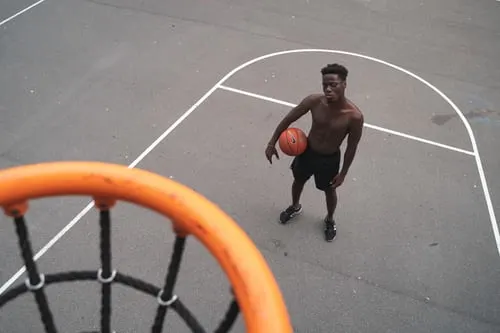Ask anyone who plays basketball and can’t dunk if it at some point they tried or wish they could. They would without questions say yes. Dunking is the most exciting play in basketball period. But can anyone who tries to dunk a basketball with a little hard work and be successful?
Can anyone dunk a basketball on a 10 foot goal? No, not every person who attempts to try and dunk will be successful. Genetics, training, and consistency all play a major factor in dunking a basketball. These are just a few factors that play an important part in dunking basketball. Staying injury-free may be just as important as the training itself, injuries can destroy an athlete’s progress and their goals.
As we dive into this topic I would like to point out that when we are talking about if it’s possible for anyone or everybody to dunk a basketball we are talking about on a regulation size 10-foot rim. Let’s be a little more realistic and assume the athlete has some sports background.
If you are thinking about buying a basketball jersey or shoes, check out the offers below from these retailers.
| Retailer | Promo Code | Promotion | Link to Retailer |
 | DROP | 70% OFF | Go to Fanatics |
 | PARSCR20 | 20% OFF | Go to Eastbay |
 | N/A | N/A | Go to Amazon |
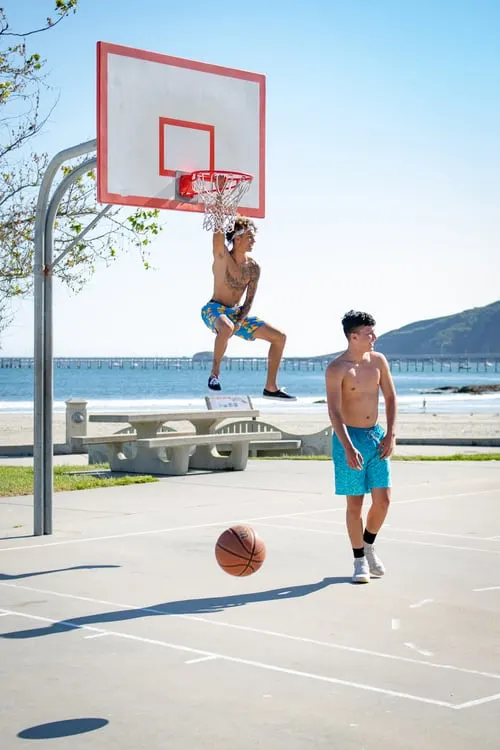
Trials and Errors of Trying to Dunk
If only it was that simple, do a program for a couple of months, gain 12 inches dunk the basketball, and call it a day, life goal complete the end! But unfortunately, it isn’t that easy. Let me show you what factors play a role in your success in dunking.
I hate to say it but all vertical jump programs on the market suck if they are not tailored to your specific needs. Are you strong in the weight room but can’t jump? Can you jump high but are weak in the weight room?
Just tell me how one cookie-cutter vertical jump program on the internet would be good for all athletes with these types of weaknesses.
It may take some trial and error to see what you actually need to focus on, you know yourself better than anyone else, and once you find what works for you stick with it. If your not sure do your research.
If every vertical jump program on the market worked then the first one that was ever created would be the only one ever needed.
I have tried many vertical jump programs and fell for the hype, the best programs I have ever tried to increase my vertical was my own based on what I knew worked for myself through trial and error done with a massive amount of research.
Trial and error can cause you wasted time and energy if you have no idea what you’re doing in your training.
Be careful, there are so many resources online that you can get the answers you need with a little digging. Lucky for you it is a lot easier now than it was 10 years ago to find the information you need. Youtube and Google are your friends.
Don’t get caught in the hype, it may take some trial and error, it’s all apart of the process. I did a hardcore plyometric program for 3 months straight and didn’t gain a single inch, why?
Because I needed to focus on strength because that was my weakness. I was a very good jumper but was very weak. I wasn’t able to convert any strength to power using plyometrics because I had no strength.
Genetics
Genetics plays a major factor and can take an athlete who does little to no training from barely touching the rim to dunking in a matter of weeks, on a program that is tailored to them.
They may be an athlete who has a lot untapped fast-twitch muscle fibers and all they needed was a little training. But these results are not common, so be warned.
An athlete who is made of more slow-twitch fibers will have more difficulty of performing explosive movements such as a vertical jump.
The reality is not everyone can achieve a 40 inch vertical even with training, there are a lot of sticking points and plateaus an athlete may go through in the process.
A further note of vertical jumps and how much a role plays, if we take a look at the average NBA athlete and their vertical jump most would assume that they have the highest jumps out of any sport.
But this is further from the truth. The average NBA athlete’s vertical jump is only 28 inches. This is above average amongst the rest of the population, and for being a tall basketball player.
But for our average folks like you and I, this is simply not enough. 28 inches would not even help me reach the rim as I need a 32 inch vertical with a 7 foot 4 reach. Speaking of height…
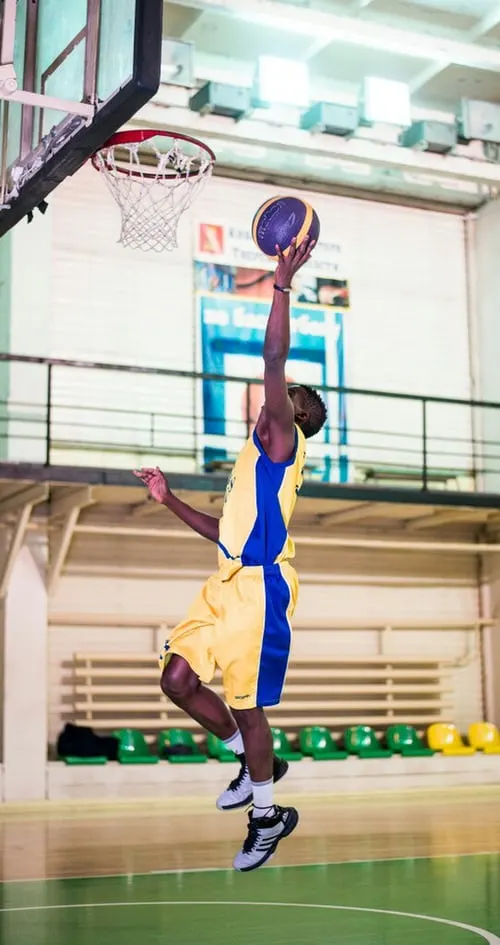
Height Matters
Being under 6 feet as opposed to over 6 feet is going to make a world of difference in how long it may take you to dunk a basketball.
I am 5 foot 9 and having a running two-foot vertical at one point in my life in the high 30s, I still wasn’t able to dunk a basketball.
I was damn near close self lobbying it off a bounce and trying to dunk that way but I still was a couple of inches away.
Take that same vertical leap and give it to a person who is over 6 feet tall and you will have a guy doing 360s and windmills easily.
Must be nice. Height matters, the taller you are the longer the reach, it’s that simple. Anyone under 6 feet will tell you how difficult it is to dunk.
Jumping technique matters, even more, you want to be able to use the power that gained from training and apply it with near-perfect technique.
Speaking of Jumping technique.
Jumping Technique
From the time I was 10 until my early 20s, I have spent a lot of time jumping and dunking on adjustable hoops for fun and still, my technique could have used some work.
At 5’9 just by practicing jumping, I was able to eventually grab a 10-foot rim. But the amount of jumping involved to get to this point really took years.
Anyone who thinks they are going to be dunking in a few months by just working out with no real practice in jumping is in for a rude awakening.
I have seen it, athletes training for months doing everything right but not jumping. I do believe there are those who barely practice jumping and can jump high, those are freak athletes that can lift a ton and are good at explosive power exercises like the power clean.
Many athletes ask how they can improve their vertical jump when they don’t even practice jumping.
They completely forget the one basic thing and that is jumping itself. Plyometric exercises help but those are tools to help you get springy and explosive.
But jumping maximally and practicing dunking is the thing you need to be spending time doing.
When you want to improve your range in basketball, yes you can increase your strength in the weight room but you also have to keep practicing shooting from the distance you want to increase your shooting accuracy.
The weights are tools to help you get there. Think of exercises as just tools and not the end all be all for increasing the vertical jump, do not let the act of jumping be overlooked.
Consistency
If you are not in it for the long haul don’t even bother starting, we can’t just do a jump program on the market and in a matter of weeks expect to gain the inches we need to accomplish our goal and poof your dunking.
Rarely does it happen, despite what vertical jump enthusiasts who don’t have a degree in the field and say they know what they are talking about?
You have to forget about the programs that guarantee 12 inches in 2 months that is not going to happen.
I don’t care what anyone says, If this were true, the NBA would have that secret, and nobody what be able to get their hands on it.
They could just put some players in a lab and have everyone jumping 60 inches eventually.
Tell yourself you are in it for the long run, if you start working don’t stop. If you do be prepared to lose some if not all your gains.
From the experience of starting and stopping all different types of workouts, the gains would be gone in as little as a month.
This for me (not saying this will happen to you) happened as when I started to lose my strength gains the thing that I lacked the most in training my vertical went down also.
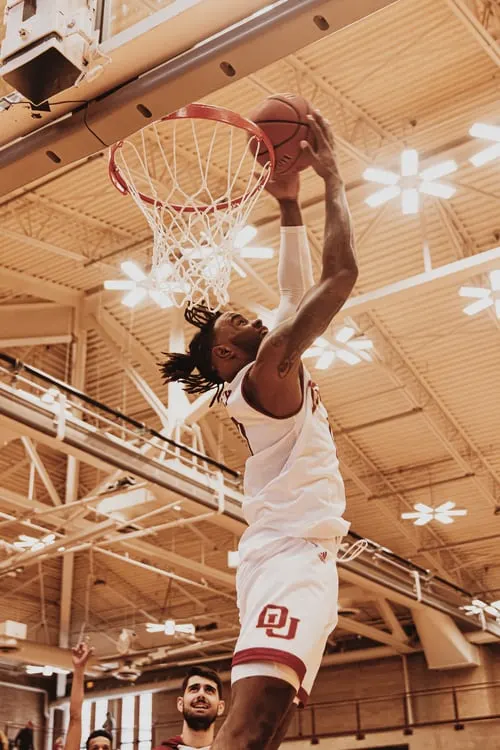
Injuries
Injuries will happen and can make or break you, it will leave you reconsidering your journey to dunking and make you wonder if it is even worth it.
Injuries can prevent you from reaching your goal, the reality is many athletes never accomplish their goals due to injuries. It will be inevitable most athletes who train their vertical jump will have nagging sore knees or even worse tendonitis.
This is due to the constant squatting and the mass amount of jumping.
How you take care of your body is very important. Foam rolling, stretching, and icing are all apart of the process and are workouts on their own.
As athletes, we tend to put more weight on the bar than we know what’s good for us. Overuse of muscles can result in fatigue and overtraining which also leads to injury.
Take care of your body so you have no regrets, even if you fail at least you tried and are not left wondering what if after an injury.
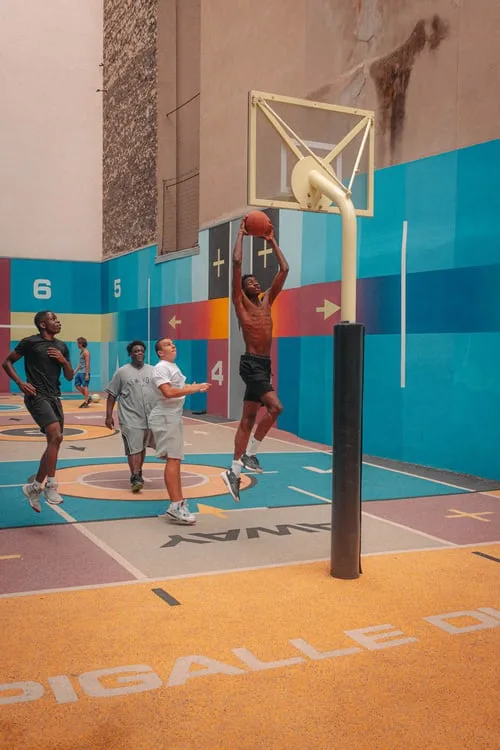
How do you accomplish your goal of dunking?
Simple, Break down big goals with smaller trackable goals:
Goals have been proven to work, and they work even better when they are tracked. It is an awesome feeling when you are able to attain a new personal record.
This really helps motivate you and gets you out of training slumps or in times when you don’t feel like working out. Here are some examples below.
You will when I accomplish a goal, I will put a line through it to indicate I completed it.
Big Goals:
Dunk a 10 foot Hoop
Squat 350 lbs etc.
Bench 225 lbs
Vertical Jump 35 inches
Power Clean 185lbs.
Lose 10 pounds.
Big Goals Broken Down to Smaller Goals:
Dunk
Touch the rim
grab the rim
grab the rim with two hands
dunk a tennis ball
dunk a softball
dunk a volleyball
dunk a basketball
Squat 350 pounds
200 lbs, 210,220,230,235, 240, 250, 260, 270, 280, 290, 300, 310, 320, 330, 340, 350. You can use 5-pound increments.
Lose 10 pounds
1, 2, 3, 4, 5, 6, 7, 8, 9, 10
Power Clean 200 pounds
100, 110, 120, 130, 140, 150, 160, 170 180, 190, 200.
Bench Press 225 pounds
135, 145, 155, 165, 175, 185, 195, 205, 215, 225.
Standing Vertical Jump
20, 21, 22, 23, 24, 25, 26, 27, 28, 29, 30, 31, 32, 33, 34, 35.
I use a journal to keep track of my workouts also and see how I am progressing. If your not constantly applying tension or progressing you may be moving backward.
A journal will help you visually see your progress, such as the weights you used in the gym the last workout and it’s a good motivator for when you feel like your not getting anywhere. You can always look at your journal and see how far you came from.
